What are the benefits of placenta encapsulation?
The placenta contains many beneficial hormones and nutrients and helps the mother to have a smoother and easier postpartum experience. Consuming your placenta can help balance out hormones, reduce the chance of baby blues, help prevent post-partum depression, boost iron levels, reduce postpartum bleeding, increase milk supply, increase energy levels, help with mother-baby bonding and help the mother feel calmer and more balanced. Having your placenta turned into capsules can be done quite soon after birth, making it easy to take and is very nourishing for those precious postpartum weeks.
The placenta contains many beneficial hormones and nutrients and helps the mother to have a smoother and easier postpartum experience. Consuming your placenta can help balance out hormones, reduce the chance of baby blues, help prevent post-partum depression, boost iron levels, reduce postpartum bleeding, increase milk supply, increase energy levels, help with mother-baby bonding and help the mother feel calmer and more balanced. Having your placenta turned into capsules can be done quite soon after birth, making it easy to take and is very nourishing for those precious postpartum weeks.
What nutrients are in the placenta?
According to www.placentawise.com the placenta contains estrogen (that helps with breast feeding, regulating postpartum moods, helps the uterus to contract back to pre-pregnancy size, decreases depression and normalises libido). It also contains Prolactin (helping with lactation and enhancing mother-baby bonding), Oxytocin (helps decrease pain, increase bonding, reduce bleeding and stabilises moods) and Placental Opioid-Enhancing factor (helps the release of endorphins, reduces pain and increases a sense of well being).
It also contains Thyroid Stimulating Hormone (helps boost energy and aid recovering from stress), Corticotropin Releasing Hormone (helps prevent post partum depression), Cortisone (reduces inflammation and promotes healing), Interferon (helps stimulate the immune system), Iron (increases energy and decreases anemia/fatigue), Urokinase Inhibiting Factor and Factor XIII (reduces bleeding and enhances wound healing), Immunoglobulin G (supports the immune system) and Human Placental Lactogen (this hormone helps promote growth of the mammary glands in preparation for lactation in the mother. It also regulates maternal glucose, protein, and fat levels).
According to www.placentawise.com the placenta contains estrogen (that helps with breast feeding, regulating postpartum moods, helps the uterus to contract back to pre-pregnancy size, decreases depression and normalises libido). It also contains Prolactin (helping with lactation and enhancing mother-baby bonding), Oxytocin (helps decrease pain, increase bonding, reduce bleeding and stabilises moods) and Placental Opioid-Enhancing factor (helps the release of endorphins, reduces pain and increases a sense of well being).
It also contains Thyroid Stimulating Hormone (helps boost energy and aid recovering from stress), Corticotropin Releasing Hormone (helps prevent post partum depression), Cortisone (reduces inflammation and promotes healing), Interferon (helps stimulate the immune system), Iron (increases energy and decreases anemia/fatigue), Urokinase Inhibiting Factor and Factor XIII (reduces bleeding and enhances wound healing), Immunoglobulin G (supports the immune system) and Human Placental Lactogen (this hormone helps promote growth of the mammary glands in preparation for lactation in the mother. It also regulates maternal glucose, protein, and fat levels).
How do I store my placenta after birth?
If you plan to consumer your placenta, it needs to be birthed onto a clean surface and then put into a clean leak-proof container and put into the fridge or on ice in an esky within 3-4 hours of birth. It’s best to refrigerate as soon as possible. Ideally the placenta is processed within 24-48 hours from birth so you can start to enjoy the benefits before your milk comes in around day 3-5.
What is the process to turn the placenta into capsules?
The placenta is first rinsed gently to remove blood clots. The umbilical cord is then removed (and can be shaped and dried as a keepsake for the child). The placenta can be left raw or steamed first as per the Traditional Chinese Medicine method. Once gently steamed on both sides, it is then sliced thinly and dehydrated at around 40-45C in a dehydrator. It is then ground and the powder is placed into capsules. It is usually returned to the mother within 24-48 hours of the birth.
If you plan to consumer your placenta, it needs to be birthed onto a clean surface and then put into a clean leak-proof container and put into the fridge or on ice in an esky within 3-4 hours of birth. It’s best to refrigerate as soon as possible. Ideally the placenta is processed within 24-48 hours from birth so you can start to enjoy the benefits before your milk comes in around day 3-5.
What is the process to turn the placenta into capsules?
The placenta is first rinsed gently to remove blood clots. The umbilical cord is then removed (and can be shaped and dried as a keepsake for the child). The placenta can be left raw or steamed first as per the Traditional Chinese Medicine method. Once gently steamed on both sides, it is then sliced thinly and dehydrated at around 40-45C in a dehydrator. It is then ground and the powder is placed into capsules. It is usually returned to the mother within 24-48 hours of the birth.
What are the differences between TCM and raw?
The main difference is that the TCM method involves steaming the placenta before dehydrating. According to TCM theory, giving birth is very cooling so the mother needs to be warmed to help with recovery. By steaming the placenta with lemon, chilli and ginger it helps the placenta to become a warming, nourishing and tonifying supplement. Steaming also kills off any surface bacteria that the placenta may have been exposed to during the birth process. It’s important to note that here may be a loss of B vitamins during the steaming process.
For people that adhere to a raw food diet, they usually prefer the raw method. It is thought that more vitamins and enzymes are kept intact by keeping the placenta raw (not steaming) and then dehydrating.
For those that are undecided, I recommend the TCM preparation as it is warming and nourishing and can safely be taken for a longer period of time. It is the most popular method used around the world. For those wanting an instant boost straight after birth, raw placenta can be used in smoothies to help reduce blood loss and replenish lost nutrients. But, the TCM method method is better suited to long term use.
The main difference is that the TCM method involves steaming the placenta before dehydrating. According to TCM theory, giving birth is very cooling so the mother needs to be warmed to help with recovery. By steaming the placenta with lemon, chilli and ginger it helps the placenta to become a warming, nourishing and tonifying supplement. Steaming also kills off any surface bacteria that the placenta may have been exposed to during the birth process. It’s important to note that here may be a loss of B vitamins during the steaming process.
For people that adhere to a raw food diet, they usually prefer the raw method. It is thought that more vitamins and enzymes are kept intact by keeping the placenta raw (not steaming) and then dehydrating.
For those that are undecided, I recommend the TCM preparation as it is warming and nourishing and can safely be taken for a longer period of time. It is the most popular method used around the world. For those wanting an instant boost straight after birth, raw placenta can be used in smoothies to help reduce blood loss and replenish lost nutrients. But, the TCM method method is better suited to long term use.
What does it taste like?
The placenta powder is encased in a vegetable capsule so there is no taste. It’s just like taking any other herb or vitamin pill.
What are the capsules made from?
I use vegetarian capsules made from cellulose. They are preservative free and gluten free. The capsules contain 100% placenta and nothing else is added.
How many capsules will I get?
An average sized placenta yields around 120-150 capsules. The amount can vary from 100-250 capsules from one placenta.
What does a placenta homeopathic help with?
A homeopathic remedy can be made from a small piece of placenta. It is considered a constitutional remedy for the baby throughout her/his life. It helps with immunity and bringing balance through times of change.
Can I still bury some placenta if I want?
Yes! if you would like to bury some of your placenta, a small section can be removed so you can have a ceremony and plant it under a tree.
The placenta powder is encased in a vegetable capsule so there is no taste. It’s just like taking any other herb or vitamin pill.
What are the capsules made from?
I use vegetarian capsules made from cellulose. They are preservative free and gluten free. The capsules contain 100% placenta and nothing else is added.
How many capsules will I get?
An average sized placenta yields around 120-150 capsules. The amount can vary from 100-250 capsules from one placenta.
What does a placenta homeopathic help with?
A homeopathic remedy can be made from a small piece of placenta. It is considered a constitutional remedy for the baby throughout her/his life. It helps with immunity and bringing balance through times of change.
Can I still bury some placenta if I want?
Yes! if you would like to bury some of your placenta, a small section can be removed so you can have a ceremony and plant it under a tree.
“I had postnatal depression after the birth of my first 2 babies but with this baby (number 3) I had my placenta encapsulated and I am feeling great. The capsules give me so much energy & I had my iron tested the other day & my levels are great for the first time in my adult life! I would recommend it to anyone about to have a baby" Thanks again! (Holly L.)
“The placenta pills are having a really positive effect on my mood and I've got more energy this time around. I didn’t get any baby blues and I’m surprised how good I am feeling for having a 3 week old AND a toddler!” (Tiff)
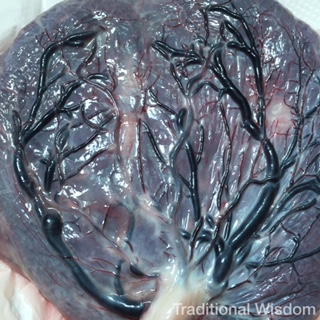
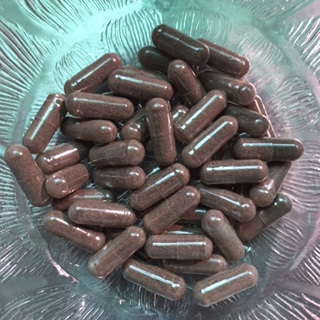
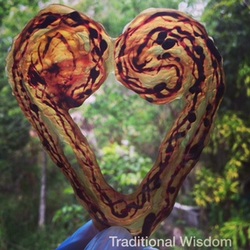
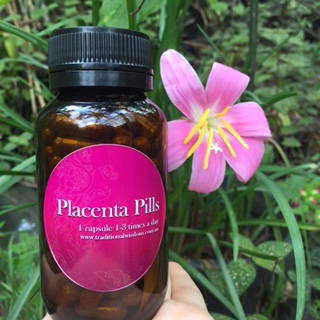
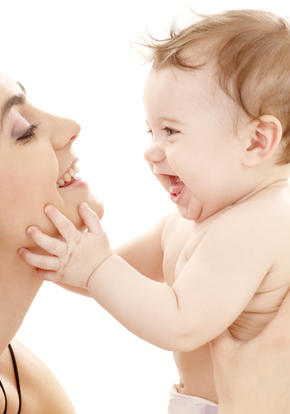
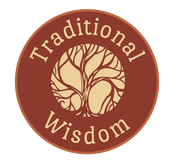
 RSS Feed
RSS Feed
